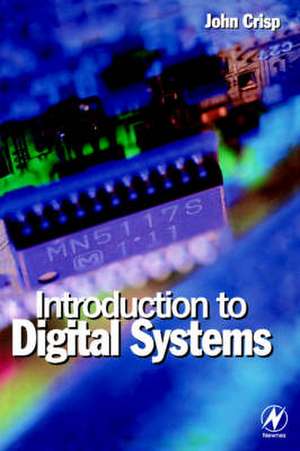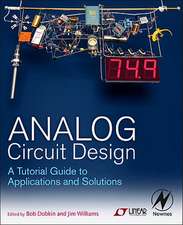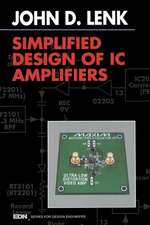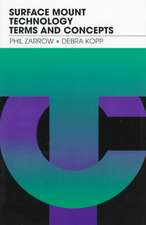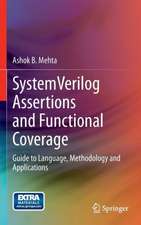Introduction to Digital Systems
Autor John Crispen Limba Engleză Paperback – 23 feb 2000
Unlike most texts, Introduction to Digital Systems also covers the practicalities of designing and building circuits, including fault-finding and use of test equipment. Students will find the text ideally matched for courses covering electronics, systems and control, and electronic servicing.
Whether you are looking for a complete self-study course in digital electronics, a concise reference text to dip into or a course text that is readable and straightforward, John Crisp has provided the solution.
- A concise, readable introductory text ideal for self-study by professionals or students on courses with limited contact time
- Covers the practical side from a technician/professional viewpoint
- Content carefully matched to a range of BTEC and C&G syllabuses
Preț: 264.66 lei
Nou
Puncte Express: 397
Preț estimativ în valută:
50.64€ • 53.02$ • 41.90£
50.64€ • 53.02$ • 41.90£
Carte tipărită la comandă
Preluare comenzi: 021 569.72.76
Specificații
ISBN-13: 9780750645836
ISBN-10: 0750645830
Pagini: 304
Dimensiuni: 189 x 246 x 19 mm
Greutate: 0.46 kg
Editura: ELSEVIER SCIENCE
ISBN-10: 0750645830
Pagini: 304
Dimensiuni: 189 x 246 x 19 mm
Greutate: 0.46 kg
Editura: ELSEVIER SCIENCE
Public țintă
A very wide technician-level professional readership plus a student readership for courses including electronics, systems & control, electronic servicing (C&G 2240), C&G IT (7260)Cuprins
What
is
a
system?
Counting systems
Types of gate
Combining gates to create new functions
Digital circuit design to meet given practical 'real-life' situations
Simplification of Boolean expressions
Karnaugh maps; Logic families - TTL and CMOS
Interfacing; Combinational and sequential logic
RS bistable; D-type, JK and master-slave bistables
Asynchronus counters
Ring and twisted counters
Registers
Other digital devices
Practical methods of building circuits
Transmission of digital data
Transmission formats and methods
Fault-finding and test equipment
Counting systems
Types of gate
Combining gates to create new functions
Digital circuit design to meet given practical 'real-life' situations
Simplification of Boolean expressions
Karnaugh maps; Logic families - TTL and CMOS
Interfacing; Combinational and sequential logic
RS bistable; D-type, JK and master-slave bistables
Asynchronus counters
Ring and twisted counters
Registers
Other digital devices
Practical methods of building circuits
Transmission of digital data
Transmission formats and methods
Fault-finding and test equipment
